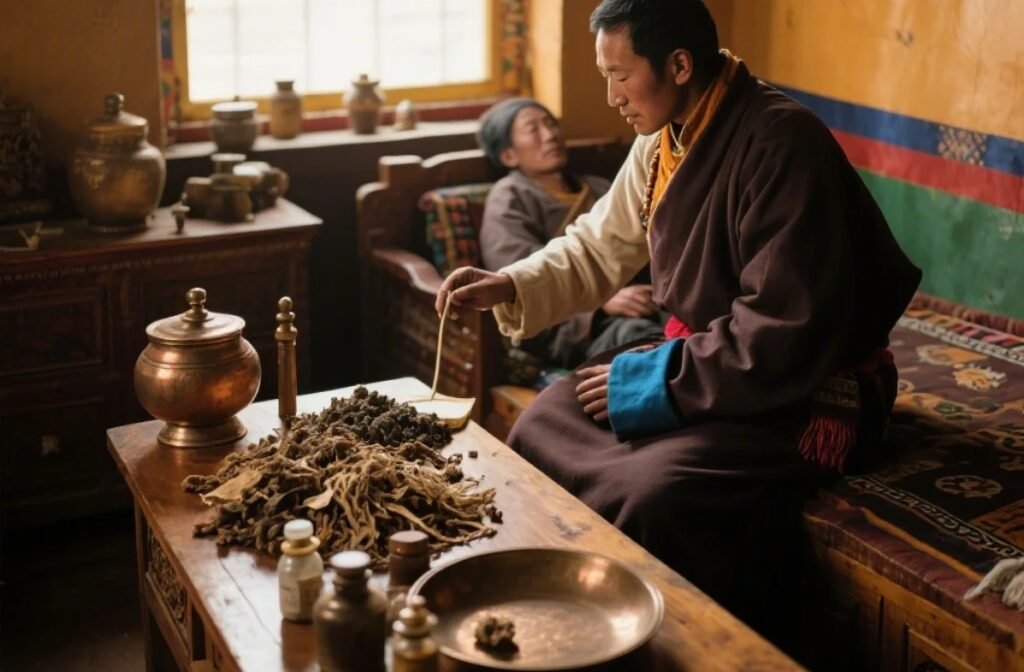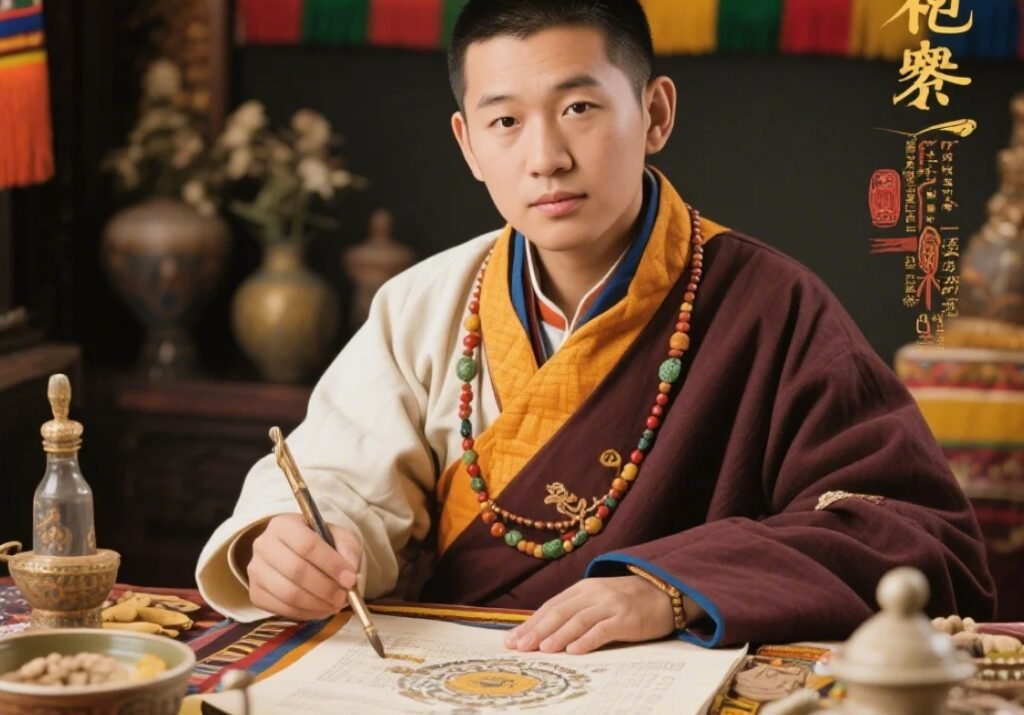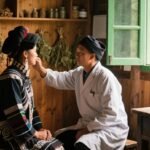Tibet, shaped by its unique geological and geographical conditions, is one of the world’s most active geothermal regions. According to incomplete statistics, there are thousands of hot springs scattered across the region. The Gazetteer of Tibetan Hot Springs alone documents over 20 types of geothermal formations, ranging from common forms like hot springs, thermal pools, boiling mud pits, and thermal ponds, to rare phenomena such as intermittent geysers, hydrothermal explosion springs, and hot water rivers. As of now, 677 individual spring sites have been recorded. Each spring has distinct chemical properties and therapeutic characteristics, providing ideal natural conditions for the development of traditional Tibetan medicinal hot spring therapies.
Based on the classification standard for mineral springs proposed by the Chinese Medical Association in 1981, Tibet’s springs include more than ten categories such as carbonated springs, hydrogen sulfide springs, and iron-rich springs. According to the Expert Consensus on the Definition and Classification of Medical Mineral Springs in China (2017), a spring qualifies as “medicinal” if it is either naturally flowing or artificially extracted and contains at least one of the following: trace elements, gases, radioactive substances, has a mineralization level exceeding 1 g/L, or a temperature above 34°C. In short, any spring with a temperature over 34°C, mineral content over 1 g/L, and at least one medically relevant component can be considered therapeutic.
Scientific studies reveal that the geothermal activity on the Qinghai-Tibet Plateau results from intense crustal movement and tectonic collision, generating immense heat that melts subsurface rock and fuels the region’s hot springs. Among the recorded sites, 295 springs (43.6%) have surface temperatures between 36–45°C, and 173 springs (25.6%) range from 46–80°C. Southern Tibet is predominantly characterized by boron-rich Cl-Na type springs, while eastern Tibet features HCO₃-Na type springs. Neutral to mildly alkaline hot springs (pH 5.5–9) are most widespread, while acidic springs are rare—underscoring the generally therapeutic potential of Tibetan springs.

Early Understanding and Use of Medicinal Springs in Tibetan Medicine
Ancient Tibetan people likely discovered the healing properties of hot springs by chance and began using them consciously for treating illnesses. However, because most springs were located deep in mountainous regions, their use was often limited by accessibility. Many classical texts describe the hardships involved in locating and utilizing these natural resources.
A famous account from the biography of Yuthok Yönten Gönpo, the founding father of Tibetan medicine, tells of his quest for a curative spring near Manlung Monastery. Guided by a figure in red robes and after enduring numerous trials, Yuthok finally discovered a spring said to have 108 outlets with “eight auspicious qualities.” He proclaimed, “It contains the potency of 700,000 medicinal substances and can treat 700,000 different ailments. Therefore, it is called the ‘Spring of 700,000 Functions,’ with eightfold waters—vast, clear, balanced in temperature, free of lime and impurities, sweet to taste, gentle on the stomach, and capable of curing all diseases.”
Even during Yuthok’s time, hot springs were widely used in (used in traditional contexts), and his reverent attitude toward their healing power reflects the deep respect held by early Tibetan healers. Their struggle to find effective springs likely inspired them to replicate these effects through artificial formulations. Drawing upon their medical knowledge and the healing principles of natural springs, Tibetan physicians began creating medicinal bath mixtures. Over time, these practices were refined through clinical experience.
In The Four Medical Tantras, one of Tibetan medicine’s foundational texts, the opening passage states: “To the west of the Medicine City lies Mount Maraya, where six superior herbs, five types of cold water stones, five types of bezoars, five rivers of medicine, and five hot springs abound.” This symbolic reference underscores the essential therapeutic role of mineral and water-based treatments.
Successive generations of Tibetan medical literature continued to explore the medicinal value of mineral springs. The Supplementary Clarification of Principles categorized springs as sulfur, blue sulfur, coal, lime, and interstitial springs. Texts such as The Ancestors’ Teachings, Supplementary Teachings, and Blue Beryl adopted similar classifications, identifying springs formed by combinations of coal with cold water stones, sulfur, or other minerals like zatsün and orpiment. Jewel Treasury of Materia Medica further subdivides springs into types such as five yellow sulfur springs, five blue sulfur springs, five lime springs, five cold water stone springs, and coal-based springs. While classification methods varied, they were generally rooted in the five primary types outlined in The Four Medical Tantras and became increasingly detailed over time, reflecting a deeper understanding of spring-based therapy.
The Evolution and Formalization of Tibetan Mineral Bath Therapy
As the understanding of mineral springs progressed, Tibetan doctors began to systematically document their therapeutic uses. The Four Medical Tantras clearly defines the indications for mineral baths in its “Supplementary Section on Medicinal Baths,” stating that they are suitable for conditions such as disease spread, poisoning, chronic fevers, lymph node swelling, old wounds, abscesses, circulatory disorders, muscle stiffness, hunchback, and emaciation.
Blue Beryl not only builds upon the descriptions in The Four Medical Tantras but also identifies hot spring baths as one of the four key medicinal bathing therapies. It further defines their scope: treating chronic heat disorders, lingering toxins, stubborn illnesses, glandular swellings, internal perforations, most blood and nerve disorders, limb stiffness, rickets, and muscular atrophy.
The text also details the properties of different mineral combinations:
Coal + cold water stone: effective for heat disorders
Coal + sulfur: cooling in nature, effective for yellow-water conditions, may exacerbate “lung” disorders
Coal + zatsün: well-balanced in temperature, treats mixed disorders
Coal + cold water stone + sulfur: suitable for a wide range of illnesses, especially cold-related disorders
Coal + sulfur + zatsün + orpiment: especially effective for yellow-water and heat-related conditions
In Notes on the Treasure Beast of Tu, springs are analyzed in even greater detail:
Coal + sulfur: yellowish water with a sulfur smell, effective for vitiligo, dry yellow-water, leprosy, and cold-type illnesses, but may aggravate “lung” conditions
Coal + cold water stone: clear and odorless, can be used for tea or brewing, purifies heat and detoxifies
Coal + alum: bluish-black, murky water with an astringent taste, helps eliminate tumors and treats gastric disorders
Coal + zatsün: slightly purple water with a fragrant bitterness, supports gout, ulcers, and urination
Coal + lime: grayish-white water with a charred smell, aids digestion and treats stomach problems

The Maraya Nanshik, authored by Minima Tongwa Dongdan, offers an even more comprehensive clinical summary of spring-based therapies. It details the sources, classifications, identification, quality assessment, therapeutic benefits, bathing procedures, optimal timing, and dietary precautions. Springs are generally categorized into five major types—sulfur, orpiment, limestone, sinter deposits, and cold water stones—with further subclassifications reaching 25 or even 101 types. The baths are indicated for spreadable illnesses, poisoning, chronic conditions, heat syndromes, lymphatic swellings, abscesses, circulatory issues, stiffness, hunchback, and wasting disorders.
Bathing procedures should begin with lower temperatures to allow the body to gradually adapt. After bathing, individuals are advised to wrap themselves warmly to (helps maintain) chills. Soaking times should increase gradually, with spring and late autumn considered the most effective seasons. Certain foods that may interfere with (used in traditional contexts) should be avoided. Jewel Treasury of Materia Medica and other classics emphasize that water in spring is “lighter” while in autumn it is “heavier,” suggesting better absorption during these seasons, with spring and autumn baths being most highly valued.
Thanks to centuries of cumulative knowledge, the therapeutic use of hot springs has become deeply integrated into Tibetan cultural life and healthcare practices. Renowned geothermal sites such as Yangbajain in Damxung, Duolong Deqing, Gyangzê’s Jigu, Drigung Thil, Rutok in Mozhugongka, Ao Ka in Sangri, Saiwalong in Qusum, and others remain popular wellness destinations.
In recent years, the formal study and clinical use of these traditions have also begun to take root. In 2018, the Rheumatism Prevention and Research Base of the Tibet Autonomous Region Hospital of Tibetan Medicine was established in Yangbajain. Projects such as the clinical study on the effectiveness and safety of hot spring therapy for osteoarthritis in Caicutang Village of Yangbajain mark a new phase of scientific exploration and professional development for Tibetan mineral bath therapy.
References
1.Yuthok Yönten Gönpo Nyingma. The Four Medical Tantras (in Tibetan). Lhasa: Tibet People’s Publishing House, 1982.
2.Yuthok Yönten Gönpo Nyingma, translated by Li Yongnian. The Four Medical Tantras (Chinese Translation). Beijing: People’s Medical Publishing House, 1983.
3.Yuthok Yönten Gönpo Nyingma, translated by Ma Shilin et al. The Four Medical Tantras (Chinese Translation). Shanghai: Shanghai Science and Technology Press, 1985.
4.Deumar Tenzin Phuntsok. The Crystal Orb Materia Medica. Shanghai: Shanghai Science and Technology Press, 2012.
5.Tsongkha Yangzhen Gangbu. Chronology of Tibetan Medicine from the 6th Century BCE to the 10th Century CE. China Tibetology, 1997(4): 96.
6.Zheng Binglin & Huang Weizhong. Selected Dunhuang Manuscripts on Tibetan Culture. Beijing: Ethnic Publishing House, 2011.
7.Wang Yao & Chen Jian. Annotated Documents of Tibetan History from Dunhuang (Revised Edition). Beijing: Ethnic Publishing House, 1992.
8.Desi Sangye Gyatso, translated by Wang Lei. A History of Tibetan Medicine (Chinese Translation). Hong Kong: Horizon Publishing, 1991.
9.Rinpoche Rikchung & Gyabé Gönsang, compiled by, translated by Cai Jingfeng. Tibetan Medicine. Lhasa: Tibet People’s Publishing House, 1982.
10.Kyewu Lhundrup Tashi & Darmen Rampa Losang Chodrak. The Biography of Yuthok Yönten Gönpo (in Tibetan). Beijing: Ethnic Publishing House, 1982.
11.Xiao Zhen, Zhang Enda, Lin Min. Expert Consensus on the Definition and Classification of Medical Mineral Springs in China (2017). Chinese Journal of Rehabilitation Medicine, 2017, 26(6): 668–672.
12.Yan Qiang, Yu Wenjia, Wang Anjian, et al. Global Overview of Geothermal Resources. Renewable Energy, 2009, 27(6): 69–73.
13.Zhao Ping, Xie Ejun, Dorje, et al. Geochemical Characteristics and Geological Implications of Geothermal Gases in Tibet. Acta Petrologica Sinica, 2002, 18(4): 539–550.
14.Ciren. A Brief Discussion on the Characteristics and Effectiveness of Tibetan Medicinal Bath Therapies (Including Hot Springs and Herbal Baths). Tibet Science and Technology, 2012(11): 54–55.
15.Huang Fukai & Liu Yinghua. A Study on the Origins of the “Five-Nectar Formula” in Tibetan Medicinal Baths. China Tibetology, 2002(4): 129–138.
16.Liu Yinghua. Ancient Tibetan Bathing Traditions and Medicinal Bath Therapies—Focusing on Dunhuang’s Tubo-Era Manuscripts. National Conference on Sowa Rigpa Medicinal Bath Therapies, Lhasa, 2019.
17.Qionglin. The Culture of Bathing and Medicinal Baths in Ancient Tibet as Seen in Dunhuang’s Tubo-Era Manuscripts. Tibetan Human Geography, 2000(5): 128–133.


Leave a Reply